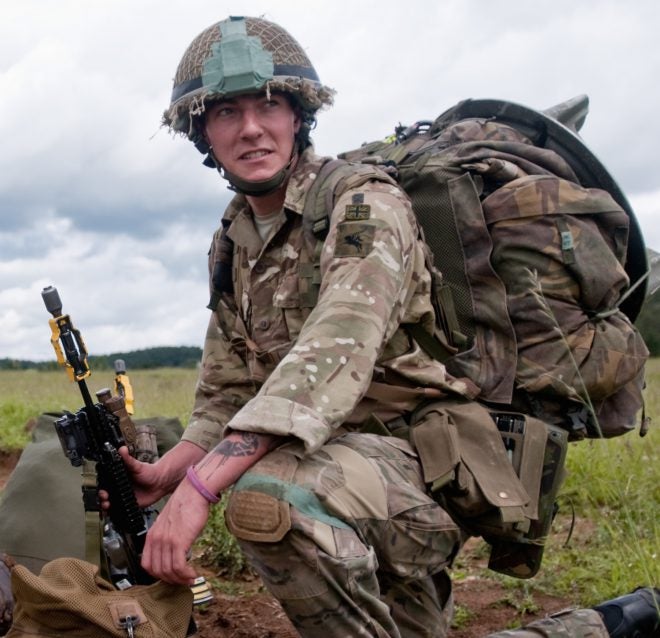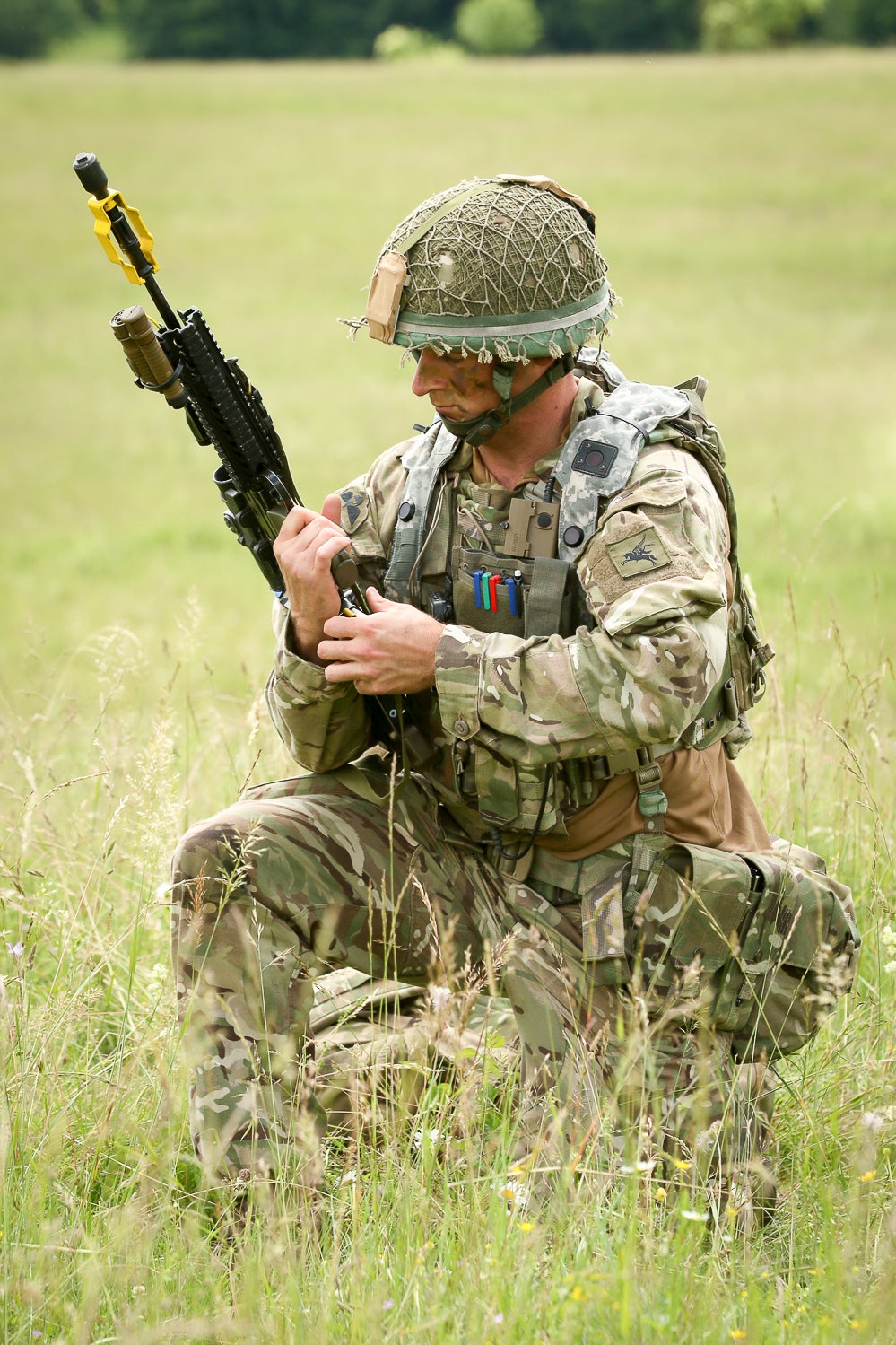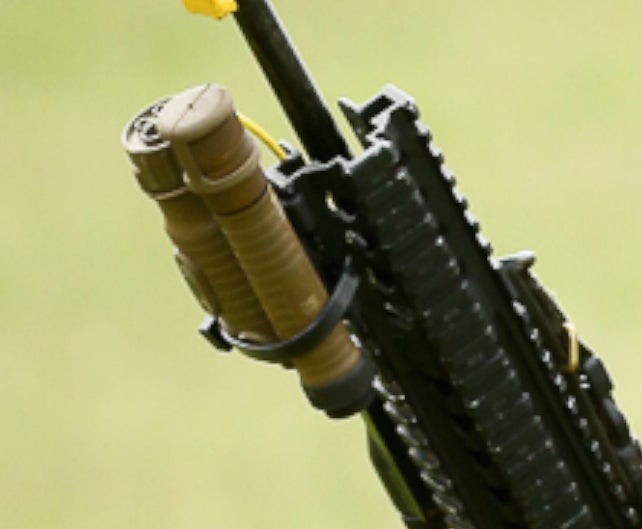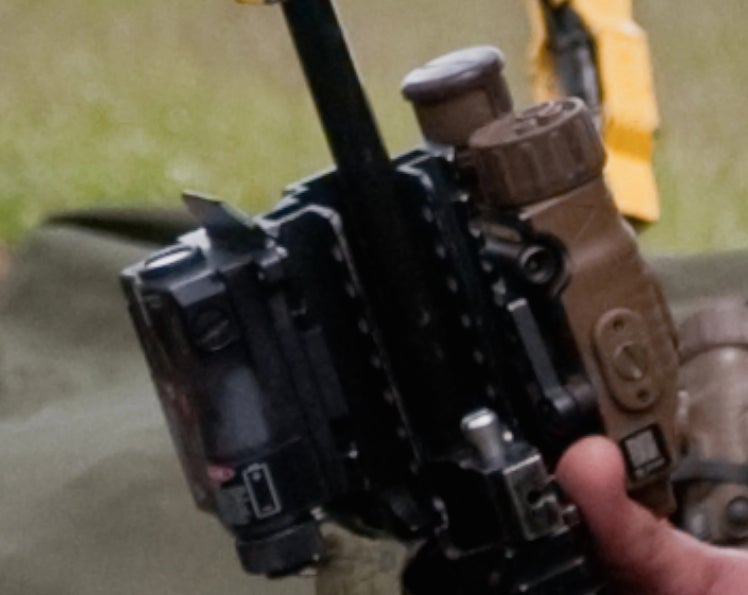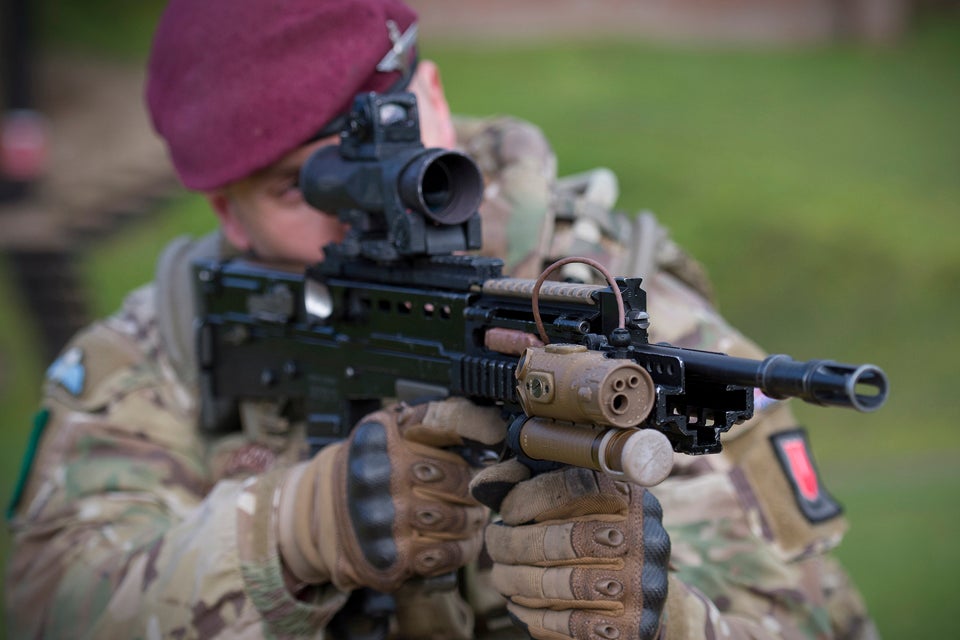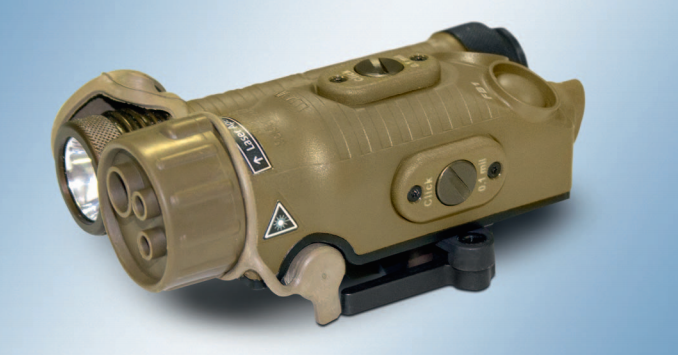Images from a joint European/ U.S. lead paratrooper training exercise named Swift Response in June of 2016 have shown that the Rheinmetall Defense Light Laser Module Mk.3 is being used on operations with the British Paratroopers, aka “Paras”. Initially the LLM Mk.3 was procured by the Ministry of Defense for the Royal Marines in 2014 under a £53 million purchase of a number of other items. However, it appears that the Marines haven’t been using the picatinny mounted ATPIAL on operations outside of Britain, or at least images and news reports of the branch do not show them being used. Their issue among the Paras could possibly be because the Marines ended up not liking the devices, and transferred them to the Parachute Regiment, or this could possibly be a completely different purchase altogether. We have some reports of the Marines using the device in training with this sketch from a Commando Course blog entry recently-
During the week we got to play with some new toys. Laser Light Modules (LLM’s) and Helmet Mounted Night Vision Goggle’s (HMNVG’s) This allowed us to shoot in the dark using Infra-Red technology (invisible to the naked eye). This was an amazing thing to do but made it much better because you use the laser to point at the target without looking through sights.
Previously and currently the British Army has issued an L3 version that comes in black and was used through operations in Helmand Province. The LLM Mk.3 is a light, visible and IR laser combination that runs off of either two CR123 batteries or can utilize two AA batteries (possibly with an insert). The particular commercial offering purchased by the MOD is Rheinmetall’s Laser Light Module Vario-Ray Compact that is described in depth on the company’s website–
LLM Vario-Ray compact – the new standard in the Vario-Ray class. Even more compact and lighter than its bigger brother through the integration of a fixed LED white light instead of an exchangeable one. All other effectors including red or green target marker, infrared target marker and electronically focusable infrared illuminator are the same. Customers can choose from different output power configurations in order to get a tailor made solution. Also available are the options including a green target marker, a SWIR target marker and the Dismounted Soldier Identification Device (DSID).
Unlike the extremely popular PEQ15 and PEQ16 ATPIALs, the LLM Mk.3 uses a green laser instead of a red one. I’ve attached the specs for the device below-
Laser class 3B (i.a.w. IEC EN 60825-1:2007) Operating voltage 2.4 … 7.5 VDC (2x CR123 or 2x AA optionally) Dimensions (LxWxH) 112x64x35mm Weight <225g
Operating voltage 2.4 … 7.5 VDC (2x CR123 or 2x AA optionally) Dimensions (LxWxH) 112x64x35mm Weight <225g
Dimensions (LxWxH) 112x64x35mm
Weight <225g Water tight up to 30m Battery life (–20°C to +55°C) up to 20h depending on selected operating mode (battery life based on Duracell® CR17345) Temperature range Operating –32°C to +71°C Storage –46°C to +71°C Relative humidity up to 100% White Light Lamp (Lamp Head) Output 8W Luminous flux up to 150lm Ray diameter ≥2m (after 10m) Range >100m (in darkness) VIS Marker (Red Light Laser) Output 5mW Divergence (FWHM) ≤0.78mrad (0.5 typically) Range In darkness up to 900m
Battery life (–20°C to +55°C) up to 20h depending on selected operating mode (battery life based on Duracell® CR17345) Temperature range Operating –32°C to +71°C Storage –46°C to +71°C Relative humidity up to 100% White Light Lamp (Lamp Head) Output 8W Luminous flux up to 150lm Ray diameter ≥2m (after 10m) Range >100m (in darkness) VIS Marker (Red Light Laser) Output 5mW Divergence (FWHM) ≤0.78mrad (0.5 typically) Range In darkness up to 900m
Temperature range Operating –32°C to +71°C Storage –46°C to +71°C Relative humidity up to 100% White Light Lamp (Lamp Head) Output 8W Luminous flux up to 150lm Ray diameter ≥2m (after 10m) Range >100m (in darkness) VIS Marker (Red Light Laser) Output 5mW Divergence (FWHM) ≤0.78mrad (0.5 typically) Range In darkness up to 900m
Output 8W Luminous flux up to 150lm Ray diameter ≥2m (after 10m) Range >100m (in darkness) VIS Marker (Red Light Laser) Output 5mW Divergence (FWHM) ≤0.78mrad (0.5 typically) Range In darkness up to 900m
Range >100m (in darkness) VIS Marker (Red Light Laser) Output 5mW Divergence (FWHM) ≤0.78mrad (0.5 typically) Range In darkness up to 900m
Output 5mW Divergence (FWHM) ≤0.78mrad (0.5 typically) Range In darkness up to 900m
Range In darkness up to 900m
IR Marker (Infrared-Laser)
Output 30mW
Divergence (FWHM) ≤0.78mrad
Range up to 2,000m (in darkness)
Electronically Focusable Infrared Illuminator
Output 30mW (optional 150mW)
Ray diameter 2.9mm
Divergence 5 to 100mrad
Range up to 1,000m
Options
Visual Target Marker (Green Light Laser)
Output 30mW
Divergence (FWHM) typ. 0.5mrad
Wavelength 520nm
SWIR Target Marker (Infrared Laser)
Output 10mW
Divergence (FWHM) typ. 0.5mrad
Wavelength 1,550nm
DSID Laser (Infrared Laser)
Output 6W (pulsed)
Range 600m
Wavelength 905nm
 Your Privacy Choices
Your Privacy Choices
